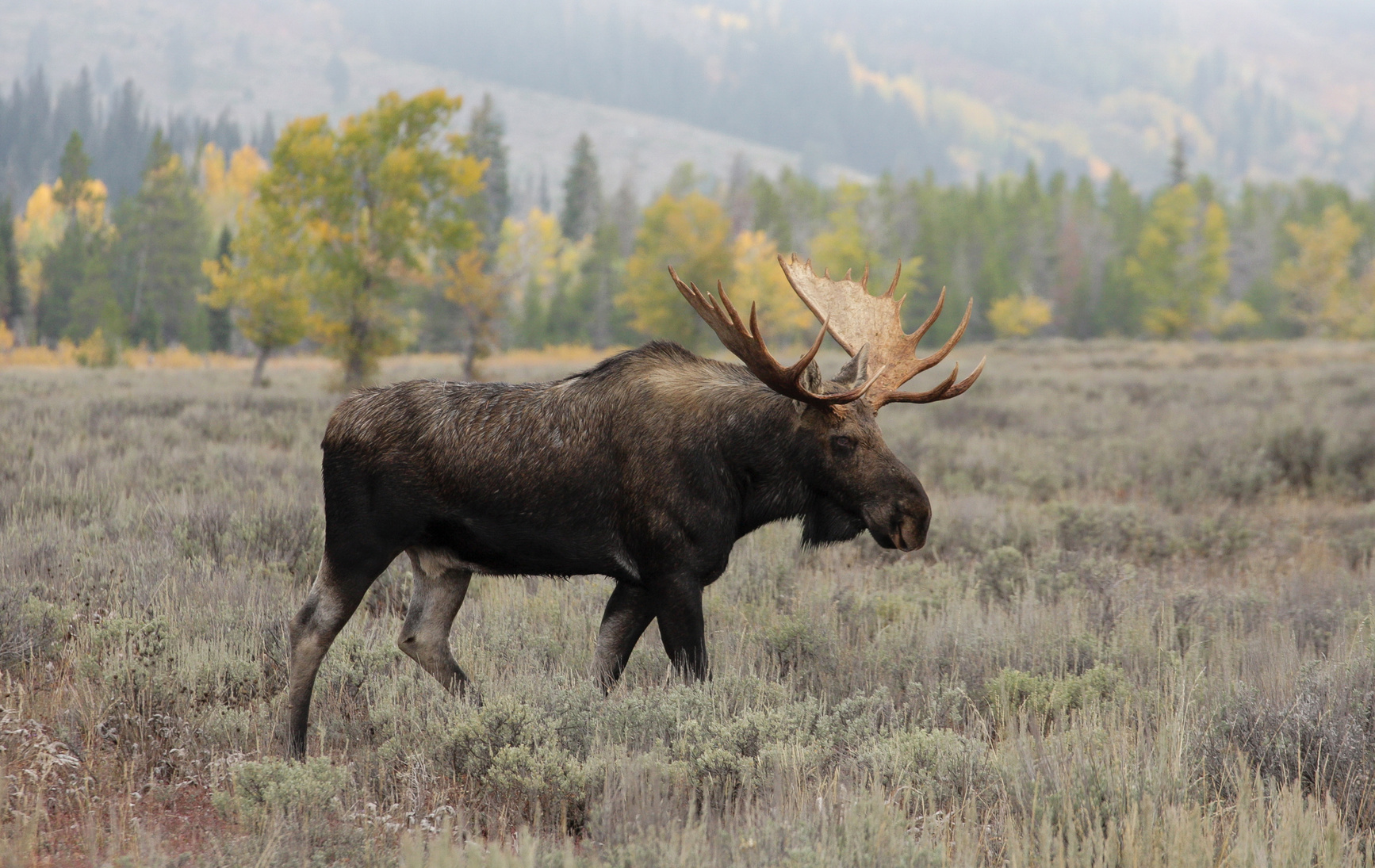Moose are the largest mammal within the deer family. They have long legs, a drooping nose and a fold of hair-covered skin called a “bell” or “dewlap”, which makes them highly recognizable. Depending on the season, their fur color can range from light brown to nearly black as the year progresses. In addition to this, these large animals reach an immense weight. Females can range from 800 lbs. to almost 1,300 lbs. Males, on the other hand, can weigh anywhere from 1,200 lbs. to upwards of 1,600 lbs. The males are easy to spot due to their antlers. Their antlers can span to be up to 50 inches apart and sometimes even more, the older the moose becomes.
Furthermore, moose breed in the fall and the females generally give birth to their calves around mid-May or early June. The mother and her young stay together until the calf or calves, in many cases, turn a year old. Within the first five months of life, the babies grow to about 10 times their initial birth weight, weighing in at around 500 lbs. Nonetheless, since moose have a very high reproductive rate, giving birth to mostly twins, if not triplets, they can easily and quickly overpopulate an area. In saying so, that is why it is not rare for Alaskan residents to see moose strolling through their backyards, on roads and walking through business parking-lots.
Additionally, during the fall and winter months, moose consume an immense quantity of willow, aspen twigs, birch and numerous other types of vegetation. Also, during the winter season and rutting periods, moose can travel up to 60 miles in search of a breeding partner or “wintering area”. This is why moose can be spotted in almost any area of Alaska- ranging from the Unuk River in the Southeast Panhandle to the Colville River on the Arctic Slope. They are most abundant in freshly burned areas that have willow, aspen and birch shrubs.
Unfortunately, as stated before, since these animals span across the majority of Alaska and throughout developing and highly populated areas, some threats to their survival are at play. In the past few years, the number of car & moose collisions has hardly decreased, even though the state has tried to inform its’ citizens of certain precautions to take, like not speeding, keeping headlights on and staying alert, especially at night.
Regardless of these efforts, nearly 800 moose-related accidents happen, each year. Other threats to their survival include hunters, predators and wide-spread human development and building. That is why it is Alaska Wildlife Rescues’ mission to try and help the death and injury rate of Alaska’s moose, drop, drastically. Each year, more and more moose are being rescued and nursed back to health and with your help, we can ensure that those numbers with continue to rise.




